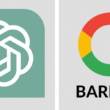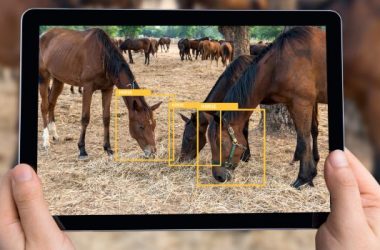In the ever-changing world of language innovation, comparing NLP vs LLM has become significant. They bridge human language and computer understanding, making communication between humans and machines smoother and more efficient.
However, NLP and LLMs are distinguished by their specific functionalities. NLP, a subfield of AI, uses an algorithm specifically designed to understand, manipulate, and generate human language. LLMs, on the other hand, are represented by models like ChatGPT from OpenAI. It uses deep learning systems, which are trained on extensive text data to produce human-like text.
LLMs lack a deeper comprehension and understanding of language but have shown remarkable performance in generating human-like text. This leads to their use in applications like chatbots, virtual assistants, and content creation.
However, they require massive amounts of data and significant computational resources for training, making them less efficient for certain NLP tasks compared to traditional NLP models that may be more suitable for specific applications with lower computational requirements.
This blog summarizes NLP vs LLM, their core applications, and how they work together to push the boundaries of human-computer interaction.
What is NLP?
Natural Language Processing (NLP) is a field of computer science and artificial intelligence that focuses on enabling computers to understand, interpret, and generate human language.
NLP involves using computational techniques, such as statistics, machine learning, and deep learning, to process and analyze natural language data such as text and speech. It goes beyond the dictionary definition of words. It considers grammar, sentence structure (syntax), and the deeper meaning (semantics) behind the language.
It allows computers to analyze text and extract information. For example, a computer reading a news article and summarizing the key points—that’s the power of NLP.
NLP enables computers to perform various tasks, such as translating languages, identifying emotions in written text (sentiment analysis), or classifying documents based on their content. In essence, IT equips computers with the essential skills to bridge the gap between human and computer communication. It’s the building block that allows more advanced applications like LLMs (Large Language Models) to flourish.
What is LLM?
LLM stands for Large Language Model. They are trained on massive amounts of text data, allowing them to go beyond basic understanding and delve into the nuances of language. Unlike NLP, which focuses on specific tasks, LLMs excel at generating human-quality text.
They can write creative content, answer your questions in an informative way, and even translate languages with a focus on fluency rather than just accuracy provides the building blocks for understanding language, while LLMs employ those blocks to construct complex and creative structures with human-like fluency. Thus, they are a powerful tool pushing the boundaries of human-computer interaction.
Further, LLM can handle a wide range of tasks, from summarizing a text to writing different kinds of creative content and answering your questions, even open-ended ones, in an informative way.
NLP vs. LLM Key Differences
NLP vs LLM used a range of technologies and models but with distinct focuses. NLP focuses on specific tasks with high accuracy using focused tools. LLMs employ statistical power and massive data to achieve versatility and human-like fluency in a broader range of functions.
As these fields continue to evolve, the technologies and models will undoubtedly become even more sophisticated. Choosing the right tool depends on the business’s specific needs. NLP might be the better choice if you need high accuracy for a well-defined task. An LLM could be a good option if you need a more versatile tool for open-ended tasks and creative text generation.
1. Scope of Application
Natural processing language is simple and focuses on specific, well-defined tasks like classifying text from spam detection, extracting information to help in summarizing factual content, and specifically bridging the gap between machine translation with high accuracy.
Whereas Large language models have a broader scope and can handle a wider range of tasks, often with a focus on human-like fluency, such as text generation (different creative text formats, code) Or question-answering (including open-ended questions).
2. Training Paradigm
NLP often uses supervised learning where models are trained on labeled data. Each data point has a clear label (e.g., positive or negative sentiment)
LLMs Primarily use unsupervised learning on massive amounts of unlabeled text data. The model identifies patterns in the data without needing pre-defined labels.
3. Architectural Design
NLP Employs various models depending on the task. These can include:
- Hidden Markov Models (HMMs) for functions like sentence segmentation
- Conditional Random Fields (CRFs) for tasks like named entity recognition
On the other hand, LLMs rely heavily on deep learning architectures, particularly transformers. These models excel at capturing complex relationships between words in a sentence.
4. Contextual Understanding
Due to their focused training and models, NLP can achieve high accuracy in understanding the context of specific tasks.
LLM might capture broader contextual information from vast amounts of data but may only sometimes achieve the same level of precision in specific contexts as NLP models. However, due to their understanding of broader language patterns, they often generate more natural-sounding and creative text.
5. Fine-tuning and Transfer Learning
NLP Models are often fine-tuned for specific tasks by training them on additional data relevant to that task. Transfer learning techniques can also be used to leverage knowledge from pre-trained models for new tasks.
Because of their massive pre-training, LLMs often require less fine-tuning for specific tasks than NLP models. However, fine-tuning can still improve performance on specific use cases.
6. Resource Intensiveness
Training NLP models can be computationally expensive depending on the model and dataset size. However, once trained, they are generally less resource-intensive to run.
Due to the vast amount of data they process, training LLMs requires significantly more computational resources, and running them can also be resource-intensive.
HOW NLP vs. LLM Work?
NLP vs LLM deal with human language and are valuable in language-related AI tasks, but they take different approaches to achieving their goals.
Think of NLP as a carpenter with a toolbox of specialized instruments—a hammer for grammar, a saw for syntax, and so on. LLMs, on the other hand, are like powerful 3D printers that can use sophisticated algorithms to take raw materials (text data) and create intricate structures (human-like text).
In other words, NLP provides the foundation for understanding language, while LLMs build upon that foundation to generate creative and informative responses. Together, they push the boundaries of human-computer interaction.
NLP: Rule-Based and Statistical Techniques
It relies on a combination of techniques to enable the generation of human language. It is mostly used for spell-checking and auto-correction.
1- Rule-based systems
Traditional NLP methods rely on pre-defined rules for tasks like part-of-speech tagging (identifying nouns, verbs, etc.) or named entity recognition (finding names of people, places, and organizations). Think of these rules as a set of instructions for the computer to follow.
2- Statistical Techniques
These involve training models on labeled data. For example, a sentiment analysis model might be trained on reviews with positive or negative labels to learn how to identify sentiment in new text. They offer more flexibility than rule-based systems but require larger datasets for training.
LLMs: Statistical Learning on a Massive Scale
LLMs are like super-powered students who learn from a vast ocean of information. Here’s what sets them apart:
1. Deep Learning Techniques
LLMs rely heavily on deep learning architectures, particularly transformers. These models excel at capturing complex relationships between words in a sentence. Transformers use a LLM technique called “self-attention” to analyze how each word relates to others in the sequence, leading to a deeper understanding of context.
2. Massive Data Training
The key to LLM success is the sheer volume of data they are trained on. This data can include books, articles, code, and web crawls, encompassing various language styles and topics. This exposure allows LLMs to learn the intricacies of language use and generate human-quality text.
3. Predictive Modeling
The dominant model for LLMs is the Transformer, with variations like GPT-3 (Generative Pre-trained Transformer 3) developed by OpenAI. These models are trained on massive datasets using unsupervised learning, meaning they identify patterns without needing pre-labeled data. They excel at open-ended tasks like text generation, translation with a focus on fluency, and question answering.
NLP vs LLM Strengths and Weaknesses
NLP vs LLM are powerful tools for working with human language, but they each have their strengths and weaknesses. NLP provides a foundation for understanding language with high accuracy in specific tasks. LLMs leverage that foundation to generate creative and informative responses with a broader range of applications but may sacrifice some precision for fluency.
| Feature | NLP | LLM |
|---|---|---|
| Focus | Specific Language Tasks | General Language Processing |
| Training Data | Focused Datasets for Specific Tasks | Massive Datasets of Text and Code |
| Strengths | High Accuracy for Specific Tasks | Text Generation & Creative Formats |
| Multilingual Capabilities (Emerging) | Open Ended Question Answering | |
| Information Retrieval & Summarization | Fluency-Focused Machine Translation | |
| Weaknesses (i) | Limited Adaptability to New Tasks | Accuracy & Explainability Can Be Lower |
| Requires Structured Data | Relies Heavily on Training Data Quality |
NLP vs LLM: Top Notable Applications
The future holds exciting possibilities for how NLP and LLMs will continue to shape how we communicate with technology. Both are reshaping the way we interact with computers through language. Here’s a breakdown of their most notable applications.
NLP Applications
Natural Language Processing (NLP) is a branch of artificial intelligence that deals with the interaction between computers and human language.
1. Machine Translation (Accuracy Focus)
NLP makes it easy to communicate and access information in many different languages with machine translation. It uses massive datasets of text and code to translate languages with high accuracy, preserving the core meaning and structure of the original text. This empowers real-time communication across borders, fosters global collaboration, and breaks down language barriers for information access.
2. Information Retrieval
In today’s information age, we’re bombarded with data. NLP comes to the rescue with information retrieval applications. Search engine algorithms like those used by Google and Bing employ NLP techniques to crawl through massive amounts of text data, understand user queries, and surface the most relevant information.
3. Sentiment Analysis
NLP isn’t just about understanding the literal meaning of words; it can also gauge the emotions and opinions conveyed within the text. Sentiment analysis applications use NLP techniques to identify the emotional tone of written content, like social media posts, customer reviews, or even survey responses. This allows businesses to understand customer sentiment.
4. Spam Filtering
Spam emails can be a major productivity drain. NLP plays a crucial role in spam filtering systems. These systems analyze incoming emails for specific language patterns and characteristics associated with spam messages. By identifying these red flags, spam filters can effectively block unwanted emails from reaching your inbox, keeping your communication channels clean and organized.
5. Chatbots
Have you ever interacted with a virtual assistant who answered your questions or guided you through a website? Those are chatbots powered by NLP. Chatbots can understand and respond to user queries in a structured way, often mimicking natural conversation. They are commonly used for customer support, answering frequently asked questions, or scheduling appointments.
LLM Applications
Large Language Models (LLMs) are a type of artificial intelligence that has been trained on massive amounts of text data. This allows them to not only understand and respond to language but also generate human-quality text, translate languages, write different creative content formats, and answer your questions in an informative way.
1. Text Generation
LLMs like GPT-3 have pushed the boundaries of what machines can do with language. They can now create different creative text formats, such as poems that capture emotions, scripts that weave captivating narratives, or even musical pieces with unique composition styles.
2. Question Answering (Open Ended)
LLMs like Lambda by Google excel at providing informative answers to user questions, even open-ended or challenging ones. Unlike traditional search engines that deliver lists of links, LLMs can understand the context and intent behind a question and synthesize information from various sources to provide a comprehensive and informative answer.
3. Machine Translation (Fluency Focus)
Machine translation has come a long way, but achieving natural-sounding fluency can still be challenging. LLMs trained with a focus on fluency prioritize generating translations that read well and feel natural in the target language, even if they might sacrifice some strict accuracy for better readability. This approach is valuable for adapting marketing materials, websites, or other content for international audiences, ensuring the message resonates and avoids.
4. Summarization (Creative)
Information overload is a real problem. LLMs can condense information into concise summaries while maintaining readability. They can even go a step further and add creative elements to make the summaries more engaging. And even help Quickly grasp the key points of lengthy documents or research papers, saving valuable time and effort.
5. Content Creation
LMs assist with content creation tasks like writing marketing copy, blog posts, or even social media captions. They can generate different creative text formats, brainstorm ideas, and help human writers overcome writer’s block or complete repetitive tasks more efficiently.
NLP vs LLM Real-World Integration Success Stories
NLP vs LLM are no longer confined to research labs. They’re making a tangible impact across various industries, transforming how we work and interact with information. Here are some compelling real-world success stories:
1. NLP Detecting Financial Fraud (Banking)
NLP’s major benefit has been shown in the banking sector, where it easily detects financial fraud. For so long, banks have encountered challenges in identifying fraudulent transactions buried within vast datasets. To combat this, NLP-powered systems analyze transaction details, emails, and communication patterns to unearth anomalies that could signify fraud.
2. LLMs Powering Chatbots for Customer Service (Retail)
To have a person who can provide customer service and answer questions around the clock is tough and frustrating. It often happens that the employee has no knowledge of how to solve customer problems; therefore, with the adoption of LLM-based chatbots, things have become simpler. These chatbots handle basic inquiries, FAQs, and simple issues in a friendly manner. Retailers are using them to cut wait times and offer round-the-clock support, freeing up staff for more important tasks and making customers happier.
3. NLP Streamlining Legal Document Review (Law)
It can be difficult for an employee to review a large number of legal documents, and it takes forever. But with NLP systems, it’s a breeze. They pull important information from contracts, spot risks, and even suggest relevant case law. Law firms love using NLP toolkits to automate tasks, boost efficiency, and reduce mistakes. This frees up lawyers to focus on giving top-notch legal advice.
4. LLMs Generating Personalized Learning Materials (Education)
Making interesting and personalized learning materials for all kinds of students is hard. But with LLMs, it’s easier. These models can create custom learning stuff that fits each student’s needs. Schools are using them to make learning more personal, boost student interest, and help everyone succeed.
Future: The Evolving Landscape of NLP and LLMs
The future of NLP and LLMs is a story yet to be fully written. As these fields continue to evolve, they have the potential to revolutionize how we interact with information, personalize our experiences, and unlock a woLLMrld of new possibilities in communication, creativity, and problem-solving.
Advancements in NLP
1. Enhanced Accuracy and Understanding
NLP models are constantly being refined to achieve higher levels of accuracy in understanding language nuances. This includes better comprehension of sarcasm, slang, and cultural references, making interactions with AI systems more natural and human-like.
2. Multilingual Fluency
NLP research is focused on developing models that can seamlessly translate and understand languages beyond the current capabilities. Imagine real-time conversations across multiple languages without any barriers!
3. Domain-Specific NLP
NLP applications will become even more specialized for various industries. For instance, legal documents, medical records, or scientific research papers will all have custom NLP models trained to understand the specific terminology and nuances of those domains.
Advancements in LLMs
1. Lifelong Learning
LLMs are evolving to learn and adapt continuously, not just from the massive datasets they are trained on initially but also from real-world interactions and new information they encounter. This will allow them to become more knowledgeable and comprehensive over time.
2. Reasoning and Commonsense Knowledge
Current LLMs excel at processing information and generating creative text formats, but the next frontier is incorporating reasoning and commonsense knowledge. This will enable LLMs to better understand the world around them, draw logical conclusions, and perform tasks that require real-world context.
3. Explainability and Transparency
As LLMs become more complex, ensuring explainability and transparency in their decision-making processes will be crucial. This will build trust with users and allow for responsible development and deployment of LLM technologies.
Conclusion
The future of NLP and LLM comes with endless possibilities, and it has become a part of daily life, plus an essential need for businesses to brainstorm ideas. It has the potential to refine communication, education, and countless other aspects of our world. These technologies will impact how we interact with information and usher in a new era of human-computer collaboration.
Learn More:
Generative AI vs Large Language Models (LLM)

Dawood is a digital marketing pro and AI/ML enthusiast. His blogs on Folio3 AI are a blend of marketing and tech brilliance. Dawood’s knack for making AI engaging for users sets his content apart, offering a unique and insightful take on the dynamic intersection of marketing and cutting-edge technology.










